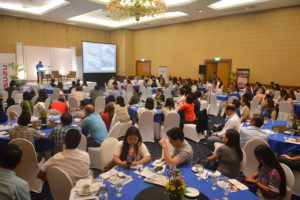
Shippers from Cebu and Davao in the Philippines are pushing for a more efficient transport and logistics system that will help lower cargo costs and make local industries globally competitive.
At the recent Mindanao and Visayas Shipping Conferences 2016 organized by PortCalls and the Philippine International Seafreight Forwarders Association, regional shippers represented by their chambers of commerce detailed their wish for the transportation industry.
Dante Araneta, Cebu Chamber of Commerce and Industry (CCCI) Logistics Committee co-chairman, pointed out that Cebu plays a vital role in moving goods and people, with the province serving as base for 80% of domestic shipping lines in the country. It is also home to Cebu International Port, the second busiest port outside Manila.
“It is for this reason that Cebu has to continuously improve its shipping industry to sustain its economic growth,” Araneta said in a presentation at the first Visayas Shipping Conference 2016 on April 28 in Waterfront Cebu City Hotel and Casino.
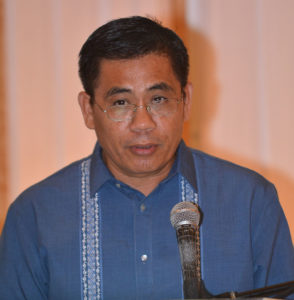
He noted that the acceleration in economic activities and movement of people underline the need for better ports and road infrastructure that link production areas to consumer markets, considering “distance drives up transport and distribution costs.”
Araneta said the Cebu chamber supports efforts to construct a new international containerized port in Cebu to “ease or mitigate port congestion, increase Cebu’s capacity to accommodate the growing cargo traffic, propel industrial development with improved cargo-handling capacity, bring progress and stimulate maritime trade and commerce in the region.”
In pursuit of lower domestic shipping costs
The Cebu chamber is, in particular, looking for ways to bring down high domestic shipping cost, since Cebu relies heavily on domestic shipping for inter-island transport of goods and services.
The expensive domestic sea freight, Araneta said, is “currently fueling a growing clamor by our local businessmen to allow foreign ships to enter and do business in primary sea routes. This move, they argue, would bring down cargo rates significantly.”
He added that as trade with China and other parts of the region opens up, the need for lower freight costs becomes even more apparent for Cebuano exporters.
“In fact, they are now asking that the cabotage law which prohibits foreign vessels from moving cargoes and people between islands be lifted,” he said.
This issue has partly been addressed when Republic Act No. 10668 or “An Act Allowing Foreign Vessels to Transport and Co-Load Foreign Cargoes for Domestic Transshipment and For Other Purposes” was signed into law in July 2015. RA 10668 allows foreign shipping lines to dock at multiple Philippine ports and co-load import and export cargos cleared by the Bureau of Customs (BOC).
Araneta acknowledged efforts now being made by domestic shipping operators to address various issues, such as high shipping rates, poor passenger services, dismal safety record, and insufficient cargo handling facilities.
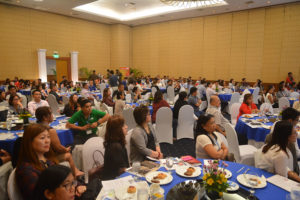
He added that some of the possible reasons for the high domestic shipping rates include the high cost of operating local shipping services; unstable prices of petroleum products; and the impact of interest rates, insurance premiums, and local taxes.
“We know that our local shipping lines can compete well with foreign vessels, so we need to appeal to the government that they be given incentives to modernize and be granted tax exemptions and better incentives enjoyed by the foreign companies, as well as more incentive packages to acquire new and modern vessels,” Araneta said.
High port fees
Another concern is how to lower the cost of port handling services like arrastre, stevedoring, and other services.
“To address this problem, we need to again appeal to the port authority to lower their fees (which are) 20% for the international vessels and 10% for the domestic carriers,” Araneta said.
The Cebu chamber is likewise requesting government to look into high destination charges imposed by international shipping lines as well as the delay in the return of container deposits to shippers.
Araneta said there are complaints by importers that some shipping lines take as long as three months to a year to return container deposits.
“The government should interfere and compel shipping lines to return the container deposit immediately once containers are returned back to their designated container yard in order for business to plow money back to business operations,” he pointed out.
Appeal to BOC
The chamber, Araneta said, is requesting the BOC to improve the process of filing the cargo manifest for shipping lines, noting it has accredited only a few service providers. “Technical problems in connectivity” are often too.
“We feel that the current providers should invest in better technology to enhance or improve their facility. We believe that this can be addressed by accrediting additional service providers capable of boosting their internet connectivity,” Araneta said.
The trade group also underscored the need for an efficient transport and logistics system considering the complexity of the global economic environment and the Association of Southeast Asian Nations’ economic integration.
Araneta said all these logistics issues pose “a serious challenge for us to be more competitive and collaborative in responding to the needs and requirements of our stakeholders,” even as he asked: “Are we really ready in terms of competitiveness and development?”
In making his appeal for better transport infrastructure, he cited the latest World Bank Logistics Performance Index that ranks the Philippines 57th out of 160 countries.
“We need a more efficient transport and logistics system to better serve the international market, raise the country’s competitiveness, and enable local industries to take full advantage of a healthy economy,” Araneta said.
Despite these challenges, Araneta still sees opportunities ahead.
“There is much that we can actually change in our own backyard. We should drive for a more globally competitive Cebu, particularly in terms of infrastructures, to inspire and energize our transportation and logistics industries to also do bigger, better and bolder moves,” he said.
Davao shippers’ wish list
At the Mindanao Shipping Conference 2016 on April 27 in Davao City, Davao shippers had one overriding wish for the transport industry—to see domestic freight rates reduced, especially for agricultural products bound for other Philippine destinations.
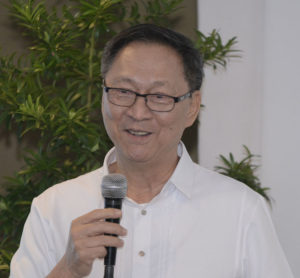
In his presentation, Davao City Chamber of Commerce and Industry president Bonifacio Tan said high domestic freight rates compel poultry and hog raisers in Manila to import corn rather than buy from Davao where the commodity is abundant.
He noted the lopsided freight rate for a 20-footer from Davao to Manila (P60,000) and Manila to Davao (less than P20,000), on account of volume issues going to Manila compared to the backload.
And unlike public utility vehicles such as jeepneys and taxis which cut their rates when fuel prices fall, ship operators have kept their rates high even though fuel costs have dropped to less than US$40 per barrel from more than $100 in 2011 and most of 2012, Tan noted.
Wider roads, urban transport plan
The Davao chamber is likewise asking for better road networks and widened roads for the region to easily accommodate big container trailers.
Together with heavy traffic and road blockages, Tan noted “narrow roads with potholes” contribute to delays in cargo delivery which, in turn, result in shut-out charges and higher costs especially for perishables. Down the line, perishable goods may be rejected by the customer due to quality concerns as well as additional costs incurred from prolonged use of electricity and detention charges when free storage runs out.
The establishment of a “suitable urban plan on transportation to address the worsening traffic in the city and the neighboring towns” is also being pushed.
“We are already (at) a critical point in emulating an EDSA-like condition,” Tan pointed out, adding there is a need for alternative roads so cargoes will not get stuck in traffic for hours, as well as additional illumination and safety markings along national highways where cargo trucks traverse.
“The high volume of port activities during night-time has resulted in several road accidents,” Tan said, putting lives at stake.
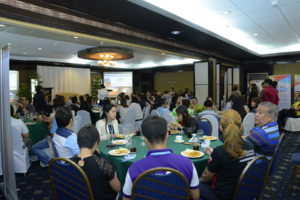
Moreover, Davao shippers are seeking simpler and clearer government regulations, especially from the customs and immigration agencies, for faster processing of documentary requirements.
“A complete set of guidelines must be in place for shippers and consignees to follow” to eliminate the case- to-case scenario, Tan stated.
Davao-Sasa port opposition
A brewing transport issue in Davao is the modernization of Sasa port.
Tan clarified that the chamber is not against the port’s development, but questioned the “very big budget” of P18 billion involved in modernizing the facility.
When operational, Tan said, the Sasa port will see a tariff increase of almost 80%, with the concessionaire allowed to raise rates every three years.
Mindanao being an agricultural producer and with the Association of Southeast Asian Nations integration, Tan said “we have to have very competitive rate and handling charges.”
He explained, “We produce agricultural products (that are the) same as what our neighbors produce, so we have to compete. And how can we compete (when we) have one of the highest electrical charges (in the region)?”
Tan also questioned the Sasa project’s lack of consultation with local stakeholders and the absence of local government endorsement.
The Sangguniang Panlungsod ng Davao has issued a resolution opposing the port bidding precisely due to non-consultation.
Concerned citizens and the Samal City Resorts Owners Association also recently petitioned the Supreme Court for a writ of kalikasan and a temporary environmental protection order to stop the project.
READ: SC asked to stop Davao-Sasa port modernization project
Tan said there were, in addition, unmet conditions set by the Regional Development Council-Region XI for the project to proceed, one of which is for government to procure two private properties for port expansion. This issue remains unresolved because the owners are refusing to sell the identified properties.
Another unmet condition is the relocation of informal settlers in Sasa so the area they occupy can be used for expansion.
If the transport department insists on bidding out the Sasa project, Tan fears what happened to the Metro Rail Transit 3 (MRT 3) project will happen to Sasa. The MRT 3 private concessionaire is now demanding P7.5 billion from government for non-compliance with certain contract obligations.
Tan also worries over a provision stipulating that government should provide a P2.9-billion guarantee of viability to the winning concessionaire.
The Department of Transportation and Communications has postponed the submission of bids for the Davao-Sasa project several times; a new bid date has yet to be scheduled. Transport Secretary Joseph Emilio Abaya earlier told PortCalls “our objective is to award (the project) before the end of the administration (in end-June).” – Roumina Pablo
